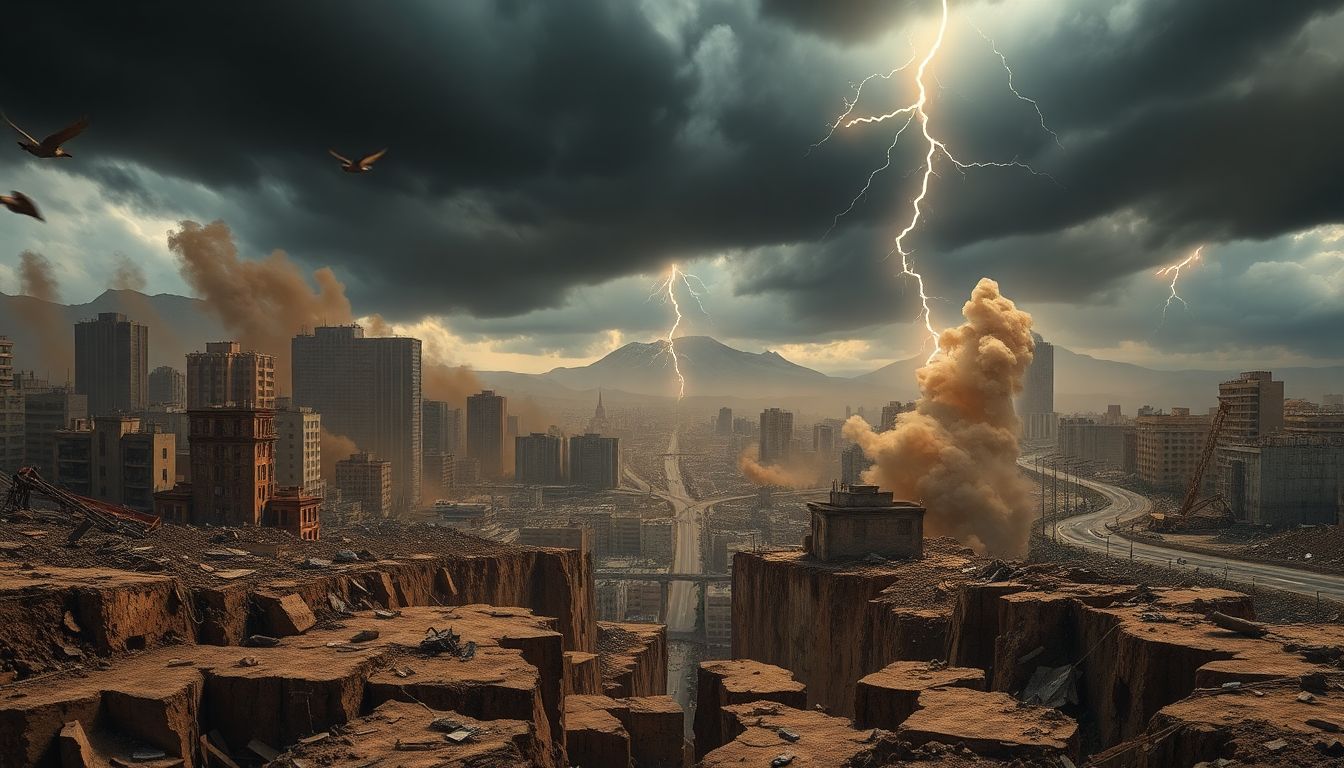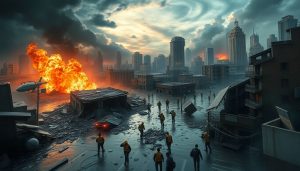Introduction
Natural disasters are happening ever more frequently and are arguably of greater magnitude in bearing down on the continents of this planet. Such events strike in an instant and thus create chaos and destruction. Everyone needs to know what natural disasters are and how they happen. The article explains a natural disaster definition, discusses types of natural disasters, and causation.
What Is a Natural Disaster? Definition and Core Concepts
Definition of a Natural Disaster
A natural disaster refers to an event that occurs suddenly, with severity exaggerated by environmental effects, which damage property, harm people, and disrupt life. Unlike the events caused by human action, these events are caused by natural processes like earthquakes or storms. They generally cause severe destruction along with little or no warning.
Criteria that Classify Events as Natural Disasters
- The Size and Force of the Event
- The Vulnerability of Communities
- Amount of Damage or Loss Inflicted
On reaching a certain threshold of their effect, the authorities will make a declaration of natural disaster. Effectively small storms or earthquakes may not be classified as natural disasters, unless they cause serious harm.
Historical Background
Natural disasters have been recorded for thousands of years by humans, and the science has developed much over the ages to let us know how and why these events occur. Significant events like the 2004 Indian Ocean Tsunami and the 2010 Haitian Earthquake have changed the methods by which communities prepare for and respond to such disasters.
Geological/Natural Disasters
Earthquakes
Earthquakes occur as tectonic shifts happen suddenly beneath Earth’s surface. Such shaking can often cause buildings to collapse or trigger tsunamis. A significant example is the 2011 Tōhoku earthquake in Japan, which produced the largest tsunami and brought about a nuclear accident.
Volcanic Eruptions
They occur when magma moves from the interior of the earth to the surface. The eruptions bring destruction with ash, lava, and pyroclastic flows. These destroy towns and interrupt air travel over continents.
Landslides
These phenomena occur mainly after rains or earthquakes. Soil or rock sliding down a hill or a mountain might bury homes and roads. Regions with steep slopes and loose soil will mostly be at risk.
Meteorological Disasters
Hurricanes and Cyclones
Warm oceans fuel hurricanes and cyclones. Under such conditions, storms are born, delivering high winds, rains, and storm surges. Hurricane Katrina in 2005 was among the most destructive storms suffered by the US.
Tornado
Tornadoes are rotating columns of air with destructive winds; they form in supercell thunderstorms. They can annihilate entire neighborhoods. The Joplin tornado of 2011 caused massive destruction and loss of lives.
Floods
Floods occur when water spills over the banks of rivers, or when the amount of water falling as rain exceeds the capacity of the drainage. Flash floods occur suddenly and are quite dangerous. Coastal areas face hurricane storm surges.
Biological Disasters
Pandemics and Outbreaks of Infection
Diseases like COVID-19 and H1N1 have set the stage for widespread illnesses and deaths; these outbreaks are a form of biological disaster concerning the health systems of the world all over.
Pest Infestations
Swarms of pests, such as locusts, can destroy crops, which is particularly true in Africa. The outbreaks jeopardize food supplies and aggravate hunger in already vulnerable areas.
Climate Change-Related Disasters
Drought
When there are stretches of many sunless days, the crops suffer from droughts, with rivers and lakes drying up. Everything considered, droughts affect farming and drinking water supply in many communities.
Wildfires
Due to hotter temperatures and human intervention, these fires destroy anything in its way. The fire in California and the forest fires in Australia destroyed homes, forests, and animal habitats.
Causes and Risk Factors for Natural Disasters
Environmental Factors
Many of the disasters are prompted by natural processes like tectonic movements and weather patterns affecting the Earth. For instance, earthquakes are generated by tectonic plate movements, while hurricanes are a result of warm oceans.
Human Activity
Man-made activities worsen disasters. Urbanization and deforestation weaken land and increase flood risks. Poor land-use planning has immense potential to convert small events into major crises.
Climate Change, and What It Does
Climate change is making certain disasters rampantly recurrent and intense. Rising sea levels augment flooding risk, and warmer oceans intensify storms. Therefore, safety for the communities will become more difficult.
Consequences of Natural Disasters
Human Toll
During major disasters, it is usually loss of lives in thousands. Many sustain injuries and lose their houses, with many becoming refugees. Equally grievous is the psychosocial toll that the trauma imposes on entire communities.
The Economic Ramifications
Disasters destroy roads, schools, hospitals, and factories. Recovery costs run into billions of dollars that place a strain on government budgets and delay reconstruction.
Environmental Consequences
Natural disasters sweep ecosystems away and produce long-term landscape changes. Fertile land is washed away during floods, landslides reshape areas by carving new valleys, and forest habitats are altered during wildfires.
Social and Psychological Ramification
Disasters will be etched in the consciousness of those present for generations, causing long-lasting mental trauma. Grief, fear, and helplessness often remain. Resiliency and community support are prerequisites for recovery.
The Strategies for Preparedness, Mitigation, and Response
Early Warning Systems
Modern technology helps predict disasters like tsunamis, storms, and earthquakes. If people move quickly, warnings that are sent out via phones and sirens can save lives.
Building a Resilient Infrastructure
The construction of earthquake-resistant and strong-wind-resistant buildings is very important. The right land-use planning can be a disaster risk reducer, such as not putting buildings on flood plains.
Community Involvement and Education
Training programs and public-awareness campaigns empower people to prepare. Knowing how to evacuate and when during emergencies may make the difference.
Government and International Role
Governments create and convert laws and policies for managing disaster risks. Facilitation through international support serves as a catalyst to speed up recovery in countries after major events.
Actionable Tips for Individuals
- Create a kit with water, food, and supplies for emergencies.
- Plan for evacuation within the family.
- Be aware of the local shelters and safe routes.
- Stay tuned and updated about the weather alerts and news.
Conclusion
The natural disaster is an extremely intensive event that originates in environmental processes and results in damage and disruption. It takes many forms: earthquakes, storms, floods, etc.; it also has a wide variety of possible effects. Knowing its causes and effects can help to prepare better activities towards risk reduction. Individual vigilance, infrastructure strength, and reaction time save lives and communities. Key to facing nature’s ever-changing system is that of being informed and ready.




